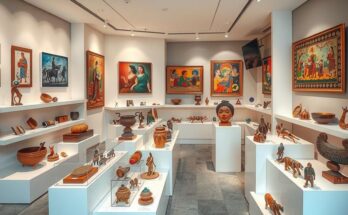A three-day cultural access event in Mākua Valley celebrated the 20th anniversary of the Settlement Agreement that ended live-fire training in the area. U.S. Army Garrison Hawai‘i, in partnership with Mālama Mākua, highlighted the importance of cultural preservation and environmental stewardship, showcasing traditional practices while fostering community connections. The event marked two decades of shared responsibility and respect in honoring the valley’s rich heritage.
In a heartfelt gathering under the sweeping sky of Mākua Valley, U.S. Army Garrison Hawai‘i commemorated a significant milestone—two decades since the Settlement Agreement that halted live-fire training in the area. This three-day cultural access event, in partnership with the community organization Mālama Mākua, celebrated a rich heritage while fostering relationships rooted in respect and environmental stewardship. The weekend showcased not only cultural preservation but also the Army’s dedicated involvement in connecting the community with their ancestral lands. As the sun rose and set across the scenic beauty of Mākua, Army personnel diligently orchestrated logistics to ensure a safe and fulfilling experience for all participants. Members from various divisions worked tirelessly, welcoming attendees, guiding them through sacred spaces, and enriching the experience with safety briefings. The soldiers remained devoted from dawn to dusk, embodying a spirit of community harmony while facilitating cultural ceremonies led by Mālama Mākua, who highlighted the vital traditions of the Hawaiian people. The event featured a mesmerizing demonstration of traditional practices, including a hands-on imu experience by the beach. Despite restrictions on igniting fires in the valley, the Army’s flexibility allowed for this important cultural practice to thrive, showcasing their commitment to supporting the community’s customs. Dr. Brian Padgett emphasized the collective journey of progress made over the past 20 years, stating the importance of collaboration in honoring Mākua Valley’s heritage and the Army’s essential role as a steward of this land. Vince Dodge, representing Mālama Mākua, expressed gratitude towards the Army for building a bridge of trust: “For us, this journey has been about fostering trust and respect.” It highlighted how the partnership has become a pathway to protect the valley’s sacredness while reveling in shared cultural heritage. The weekend echoed the idea that collaboration fosters positive outcomes, instilling hope within the hearts of all who participated. Colonel Rachel Sullivan encapsulated the experience by reflecting on the significant progress achieved together, emphasizing the shared legacy of Mākua Valley: “This event symbolizes how far we’ve come together.” As the celebrations drew to a close, the sense of unity and hope lingered, promising a continued partnership between the Army and Mālama Mākua, with aspirations to protect and enhance the cultural richness of Mākua Valley for future generations.
The celebration in Mākua Valley stems from a historical agreement reached 20 years ago, which aimed to halt live-fire training activities in the region. This agreement has allowed for an ongoing partnership between the U.S. Army and the community organization Mālama Mākua, dedicated to preserving the valley’s cultural and environmental heritage. The commitment to cultural access and environmental stewardship represents a revitalization of local traditions, connecting the community with their ancestral lands and promoting mutual respect between military and cultural practices.
The event underscored the collaborative spirit between U.S. Army Garrison Hawai‘i and Mālama Mākua, proving that when cultures unite, extraordinary milestones can be achieved. Through shared efforts, both the military and the community have celebrated a rich heritage while safeguarding it for future generations. The foundational work forged over the last 20 years instills a deep commitment to respecting Mākua Valley’s cultural significance, ensuring that its legacy continues to thrive in harmony with modern stewardship practices.
Original Source: www.dvidshub.net



